Beginners interested in macro photography often ask, “What is a macro lens?” A macro lens is a specialized close-up lens designed to capture small subjects at high magnification. Unlike standard lenses, macro lenses let you get extremely close to your subject while maintaining sharp focus, revealing details that may be invisible to the naked eye.
With a true 1:1 macro lens, subjects like insects, flowers, and water droplets can fill the frame in life-size detail. In this article, we’ll explain how macro lenses work, key features such as focal length and maximum magnification, and how to choose the best macro lens for your photography.
What You’ll Learn In This Article:
- What a macro lens is and how it works
- The difference between macro vs micro lenses
- Key features like focal length, magnification, and macro focus
- How to use a macro lens for portraits, insects, flowers, and tabletop photography
- Tips for choosing the right Tamron macro lens for your needs
What Is a Macro Lens and How Does It Work?
A macro lens is a lens specialized for close-up photography that allows you to capture subjects at life-size or near life-size magnification. This makes them ideal for macro photography, where small subjects are photographed in extreme detail. Most macro lenses are prime lenses (fixed focal length) that deliver high resolution and smooth bokeh, making them useful beyond just close-up work.
Although there is no strict industry definition, a lens with a short minimum focusing distance and a maximum magnification of 1:2 (half life-size) or 1:1 (true life-size) is typically called a macro lens. For example, a 1:1 macro lens can capture subjects like flower petals, insects, or textures so that their actual size is reproduced on the camera’s sensor. This level of detail is what makes macro lens photography so unique compared to standard zoom or telephoto lenses.
Pro Tip: A 1:1 macro lens is considered the gold standard in macro lens photography, as it allows subjects to be reproduced at their actual size on the camera’s sensor.
What is Close-Up Photography (Macro Photography)?
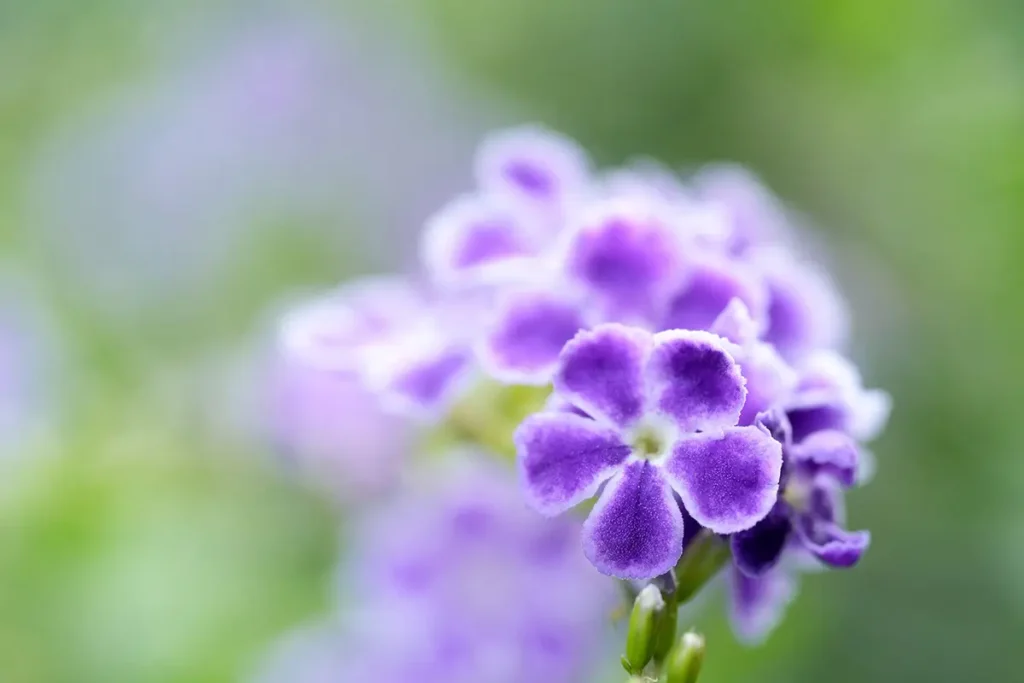
Close-up photography, also known as macro photography, involves taking pictures by positioning the lens very close to the subject. A dedicated macro lens stands apart because it is designed to achieve sharp focus at this extremely close range. This allows you to capture fine details — such as the texture of flower petals, the veins of leaves, or the intricate wings of insects — that a regular prime or zoom lens cannot reproduce.
By focusing at such short distances, a macro lens makes it possible to reveal structures and patterns that often go unnoticed by the human eye. This is why macro photography is widely used in nature, product, and fine art photography.
Pro Tip: When researching how macro lenses work, check whether a lens is marketed as “micro” (as Nikon calls its macro lenses) — they’re the same thing, but branding varies by manufacturer.
Features of Macro Lenses
Macro lenses stand apart from standard lenses because of three key characteristics: maximum magnification, focal length, and minimum focusing distance.
Maximum Magnification
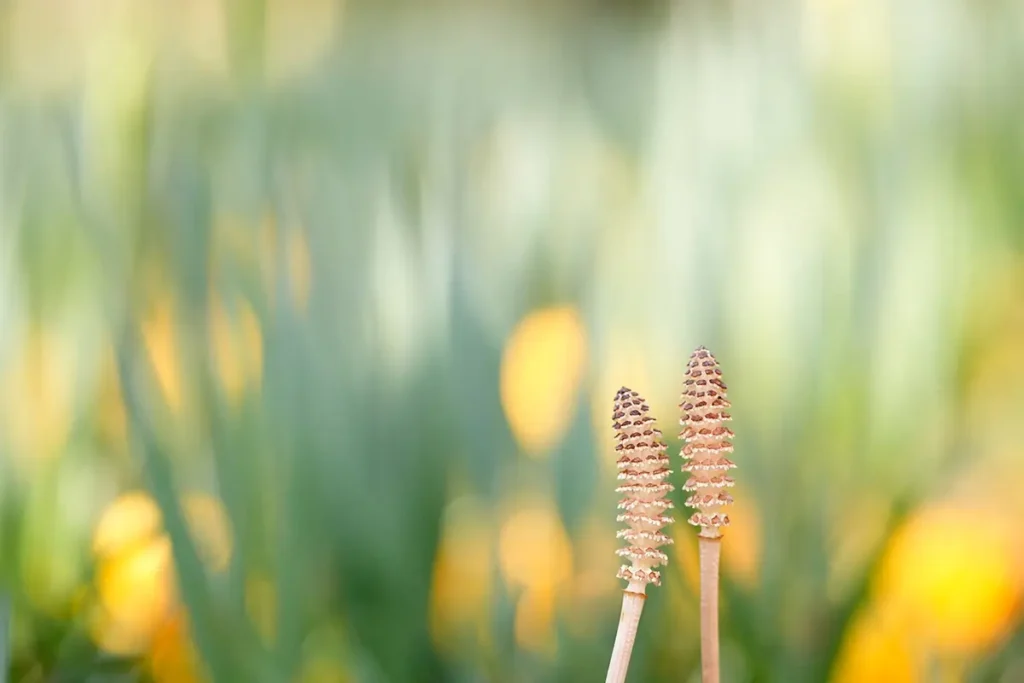
Maximum magnification describes the ratio between the subject’s actual size and its size on the camera sensor. A lens that can reproduce a subject at life-size is called a 1:1 macro lens. When the image is half life-size, it’s called a 1:2 half-macro lens.
There are also other types of close-up lenses that provide a maximum magnification of 1:4 or greater, allowing you to capture subjects in more detail than a standard lens, though not at the true macro level of a 1:1 macro lens.
Photographers seeking extreme close-ups — such as insect eyes or the texture of jewelry — typically use a 1:1 macro lens for the highest level of detail.
Focal Length and Minimum Object Distance
The minimum focusing distance is the shortest distance from the sensor to the subject where the lens can still focus. The working distance — the space between the lens front and subject — varies depending on focal length.
For example, the Tamron 90mm F/2.8 Di III VXD 1:1 Macro (Model F072), a medium telephoto macro lens with a minimum focusing distance of 9.1” (23cm) and a working distance of approximately 3.2” (8.2cm). This makes it ideal for photographing wary subjects like butterflies or bees.
By contrast, shorter focal lengths (20mm, 24mm, 35mm) let you get extremely close, making them excellent for tabletop photography and creative wide-angle macro shots.
Advantages of Macro Lenses
Macro lenses have advantages that regular lenses don’t have.
Capture Small Subjects in Detail
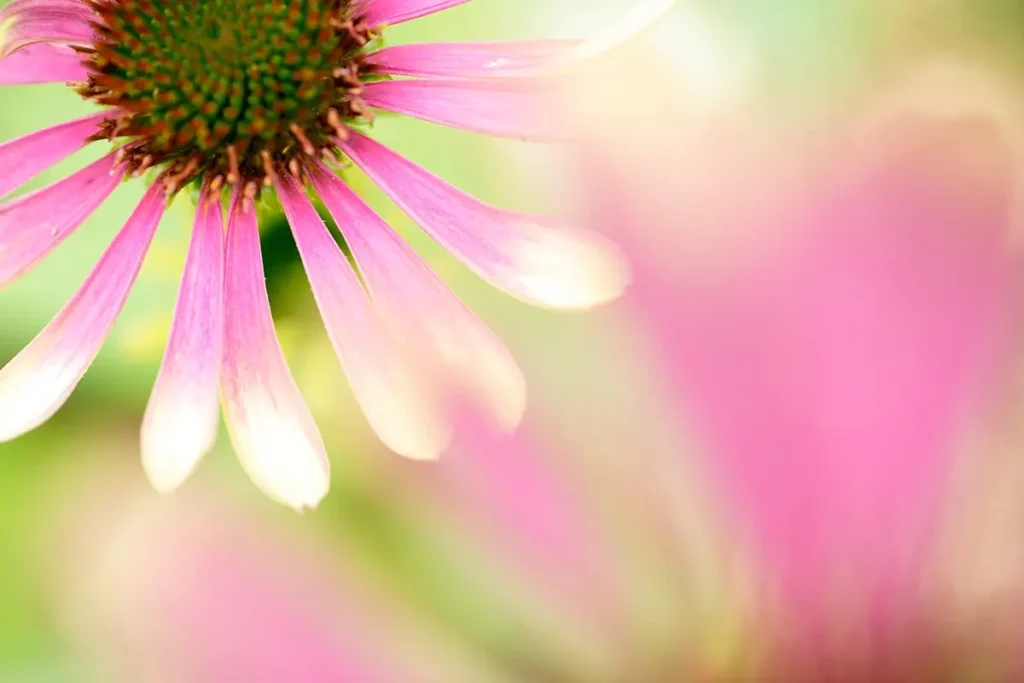
Macro lenses let you magnify small subjects so that fine structures — such as pollen grains, water droplets, or insect wings — fill the frame. This ability to capture fine details sets macro photography apart from standard photography.
Beautiful and Smooth Bokeh

Macro lenses generally have a shallow depth of field, making it easy to create creamy bokeh effects.
By taking advantage of this bokeh, you can make your subject stand out more and achieve beautiful expressions like those in impressionist paintings. It also helps to focus the viewer’s attention on the details.
Versatility Beyond Macro Photography

While designed for close-up photography, macro lenses also excel at portraits, landscapes, and still life thanks to their sharp resolution and smooth background blur. A macro lens for portraits, for example, allows you to highlight facial features while producing a pleasing background separation.
Frequently Asked Questions About Macro Lenses
There are many things about macro lenses that can be confusing, especially for beginners learning about macro photography. Here are answers to some common questions.
What is the Difference Between a Macro Lens and a Prime Lens?
Lenses are generally divided into prime lenses with a fixed focal length and zoom lenses with adjustable focal length. Prime lenses often have wide maximum apertures, making it easier to achieve shallow depth of field and large bokeh.
Macro lenses are usually prime lenses, but they are specifically designed for close-up photography. A macro lens offers sharp resolution, smooth bokeh, and the ability to focus at extremely short distances — making them an enhanced type of prime lens specialized for close-up and macro lens photography.
What is the Difference Between a Macro Lens and a Telephoto Lens?
Lenses are often categorized by focal length:
- Wide-angle lenses: ~35mm or less
- Standard lenses: ~50mm
- Telephoto lenses: ~80mm or more
Macro lenses with longer focal lengths, such as 90mm or 100mm, are often called telephoto macro lenses. Unlike a standard telephoto lens, which is designed for distant subjects, a telephoto macro lens combines magnification with close focusing. This makes it perfect for photographing flowers or insects where you need working distance.
This difference between macro and telephoto lenses is important: while a telephoto lens brings distant subjects closer, only a telephoto macro lens can focus close enough for macro photography.
What is a Macro Lens vs a Micro Lens?
This is a common source of confusion. Macro vs micro lens is simply a matter of branding. Nikon refers to its macro lenses as “Micro” lenses, but they function exactly the same as macro lenses from other manufacturers. Both are capable of close-up photography at reproduction ratios like 1:1 or 1:2.
What is the Difference Between 1:1 Full-Size Macro and a 1:2 Half-Macro?

As explained above, maximum magnification is key to understanding macro lenses.
- A 1:1 macro lens reproduces the subject at actual life-size on the sensor.
- A 1:2 macro lens reproduces the subject at half its actual size.
Because of this, the best macro lens choice depends on your subject. A 1:1 macro lens is ideal for fine details such as the structure of insects or the surface of flower petals. A 1:2 half macro is useful when you want to capture your subject along with some of the surrounding environment for context.

On the other hand, half macro has a maximum shooting magnification of 1:2, meaning the size of the image on the sensor is half the size of the actual subject. Half macro is suitable for shooting without getting too close to the details and also for including some of the background.
Macro Photography Tips
Now that we’ve answered, “What is a macro lens?” and “What is macro photography?,” there are a few points to keep in mind when learning how to use a macro lens.
1) Choose the Right Lens for the Subject
The minimum focusing distance and macro lens focal length affect how you shoot.
Telephoto macro lenses are suitable for a wide range of purposes, from photographing flowers and insects to taking portraits and landscapes that make use of bokeh. However, because the depth of field is shallow, you will need to get used to focusing.
On the other hand, wide-angle macro and standard macro lenses allow you to get closer to the subject than telephoto macro lenses, so they are suitable for shooting in places with limited movement, such as photographing small items in front of you or tabletop photos .
2) Focus on the Subject
In macro photography, it is important to focus firmly on the main subject.
In macro photography, sharp focus is essential. A shallow depth of field can easily blur the subject, so macro focus often works best when using manual focus (MF) rather than autofocus (AF). This helps lock onto the precise detail you want to emphasize.
3) Balance Background and Composition
A macro lens isolates your subject, but the background can make or break your image. Contrasting colors create dramatic separation, while matching tones can create a softer atmosphere. This is one of the creative strengths of macro lens photography — the same subject can appear completely different depending on how you balance composition and background.
Shooting Scenarios Where Macro Lenses are Useful
Macro lenses are versatile and can be used in many shooting situations. Here are a few where they excel:
Flowers and Grasses

A close-up lens reveals the delicate structures of flowers, such as veins, stamens, and pollen grains. You can either isolate a single bloom with background blur or capture clusters with soft, painterly effects.
Photographing Insects
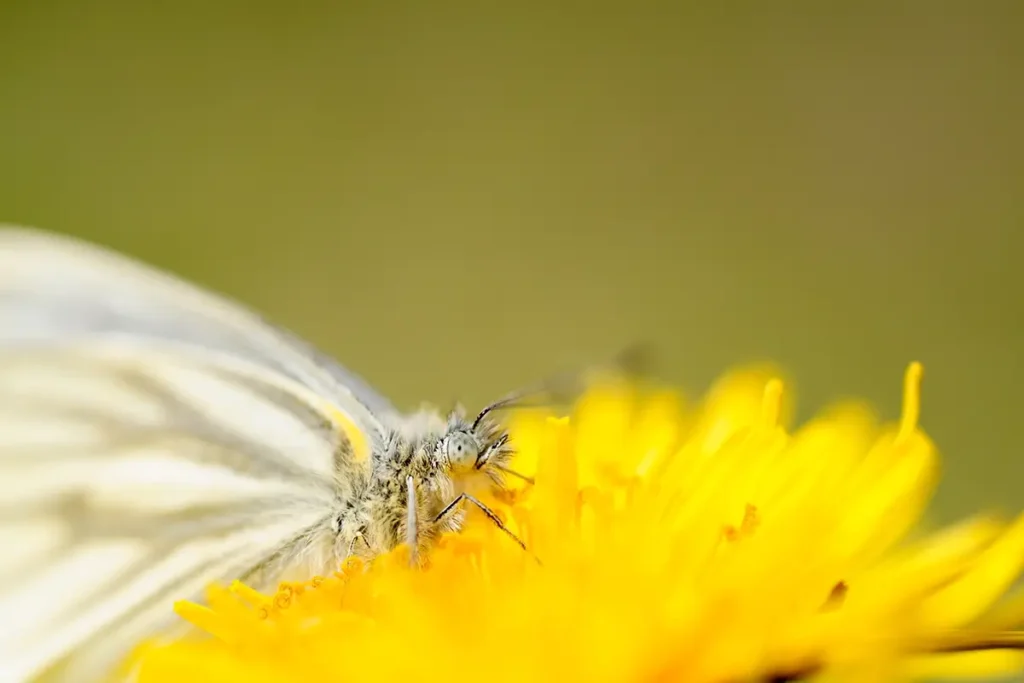
Insects are classic subjects for macro photography. Their textures, hairs, and structures are only visible with a 1:1 macro lens. For skittish insects, a telephoto macro lens allows you to maintain distance while still capturing detail.
Photographing Water Droplets
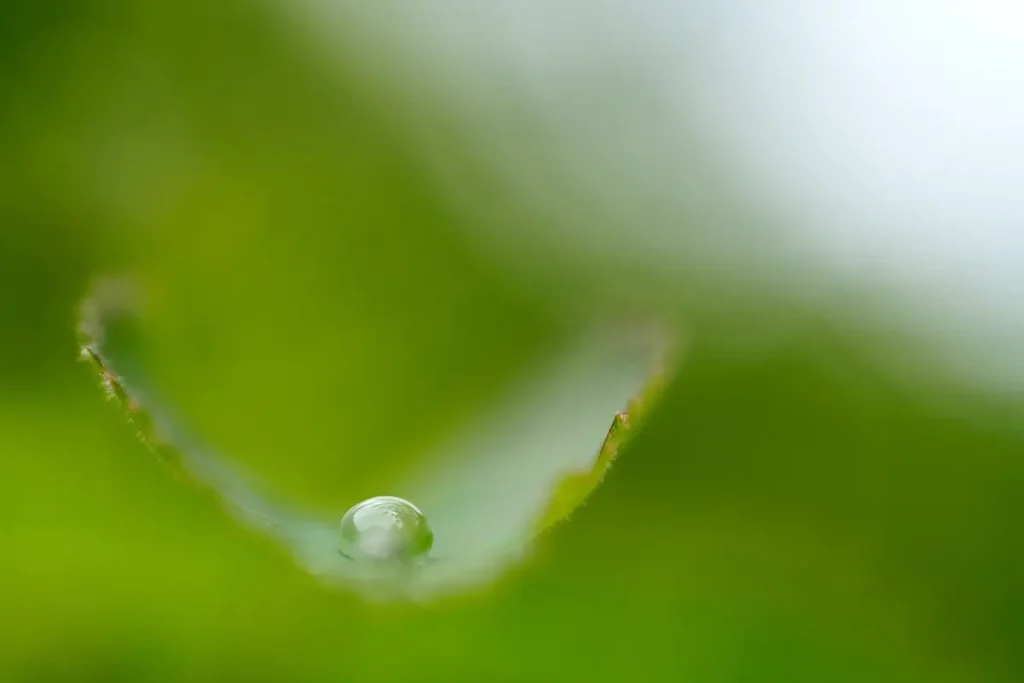
Macro lenses let you highlight the spherical shapes of droplets and the reflections inside them. Changing composition and background colors can transform the mood completely, showing how macro lenses work to create artistic effects.
Tabletop Photography

A wide-angle macro lens or standard macro lens is perfect for food, crafts, and product photography. The shallow depth of field highlights the subject while capturing the textures of ingredients, props, and surfaces.
Antiques and Small Objects

Macro lenses reveal the fine details of vintage furniture, jewelry, or collectibles. Using a macro lens for portraits of objects, you can highlight texture, wear, and craftsmanship in a way that standard lenses cannot. This is also where a macro lens for portraits of objects can shine, giving small subjects a sense of character and presence much like portrait photography with people.
How to Choose a Macro Lens
If you’re deciding how to choose a macro lens, keep these factors in mind:
Resolution and Bokeh
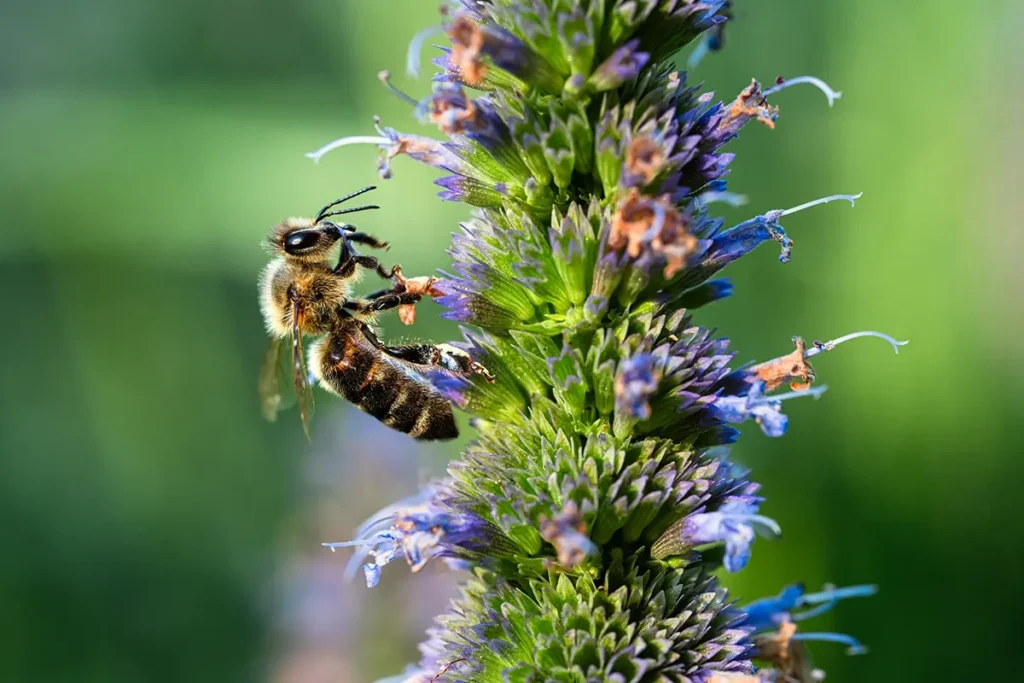
High resolution combined with smooth bokeh ensures your images balance sharp detail with artistic blur. Looking at macro lens sample images is a great way to evaluate whether the lens matches your creative style. Before buying, it’s smart to review macro lens sample images online to see how a lens performs in real-world scenarios.
Minimum Object Distance and Maximum Magnification
A shorter focusing distance allows extreme close-ups. Decide between 1:1 macro lenses for maximum detail or 1:2 lenses for more flexible compositions. Understanding these specs is central to learning what is a macro lens used for and how to choose the best one for your style.
Maximum Aperture (F-number)
A wide aperture such as F/2.8 improves low-light shooting and makes it easier to achieve background blur.
Autofocus Performance
Because accurate focus is critical in macro photography, reliable AF is essential. Smooth manual focus control also helps with macro focus adjustments. Learn more about Tamron’s AF technology. >>
Size and Weight
Compact, lightweight lenses are easier to handle in the field. This is especially important when shooting handheld macro photography.
Moisture-Resistant Construction
Many outdoor macro photography scenarios involve dew or rain. A moisture-resistant macro lens gives you the confidence to shoot in these conditions.
Tamron’s Recommended Macro Lenses
Tamron has long been known for designing some of the most popular and recommended macro lenses, from legendary 90mm lenses to versatile 1:2 half-macro zooms.
1:1 Macro Lens
Tamron 90mm F/2.8 Di III VXD 1:1 Macro (Model F072)
- Classic medium telephoto macro with 1:1 magnification.
- Ideal for flowers, insects, and fine details.
- Combines high resolution with beautiful, smooth bokeh.
- Macro Lens Sony E mount | Macro lens Nikon Z mount
1:2 Macro Lenses
Tamron 50-400mm F/4.5-6.3 Di III VC VXD 1:2 Macro (Model A067)
- Telephoto zoom with 1:2 half macro capability at 50mm.
- Perfect for wildlife, action, and macro lens photography versatility.
- Sony E mount | Nikon Z mount
Tamron 50-300mm F/4.5-6.3 Di III VC VXD 1:2 Macro (Model A069)
- Lightweight telephoto zoom with close-up shooting ability.
- Excellent balance of portability and macro performance.
- Sony E mount
Tamron 18-300mm F/3.5-6.3 Di III-A VC VXD 1:2 Macro (Model B061)
- All-in-one zoom lens with 1:2 macro capability.
- Perfect for travel, offering wide-angle to telephoto coverage with macro detail.
- Sony E mount | Canon RF mount | Fujifilm X mount | Nikon Z mount
Tamron 35mm F/2.8 Di III OSD 1:2 Macro (Model F053)
- Wide-angle half macro lens for tabletop, street, or everyday close-up photography.
- Sony E mount
Tamron 24mm F/2.8 Di III OSD 1:2 Macro (Model F051)
- Wide-angle macro lens that captures environmental context with close-up details.
- Sony E mount
Tamron 20mm F/2.8 Di III OSD 1:2 Macro (Model F050)
- Ultra-wide half macro lens.
- Great for dramatic perspectives combining subject detail with surrounding scenery.
- Sony E mount
Conclusion: Explore the Fascinating World of Macro Lens Photography!
Macro lenses make it possible to explore a hidden world of detail. From the texture of flower petals to the surfaces of antiques, macro photography reveals beauty that ordinary lenses cannot. Whether you’re just learning what is close-up photography, comparing macro photography tips, or deciding between a true 1:1 macro lens like the Tamron 90mm F072 or a flexible 1:2 half macro lens like the Tamron 50-400mm, each choice offers new creative opportunities.
Discover Tamron’s line-up of macro lenses at an authorized Tamron dealer near you or shop now at the official TAMRON Store.
